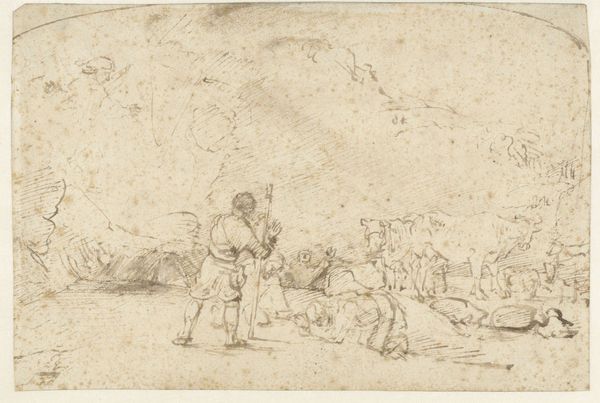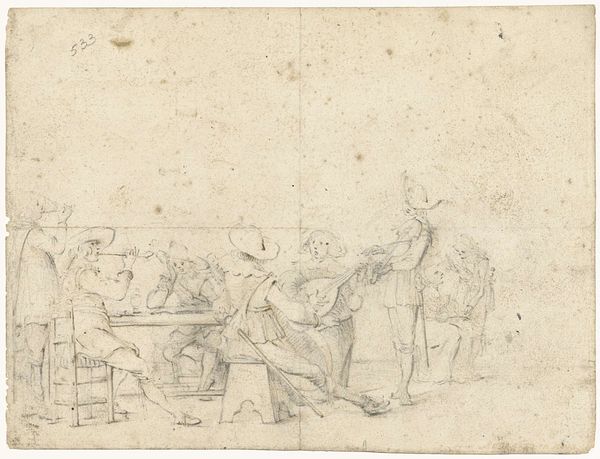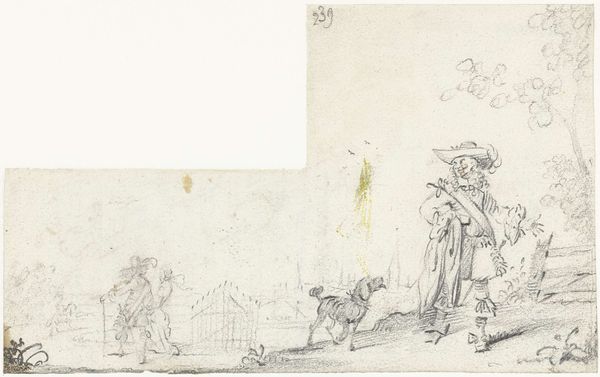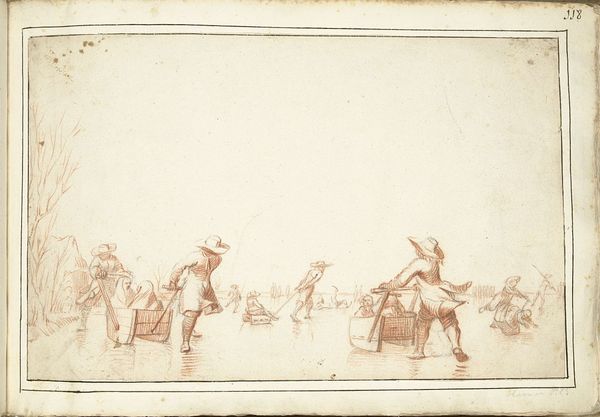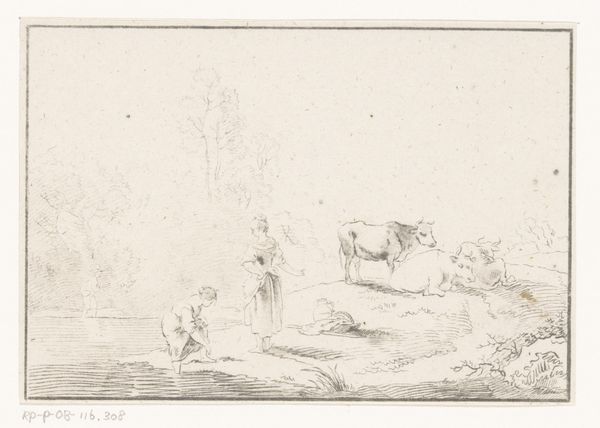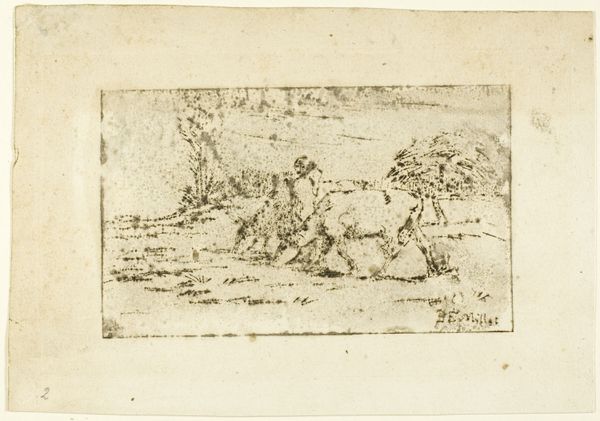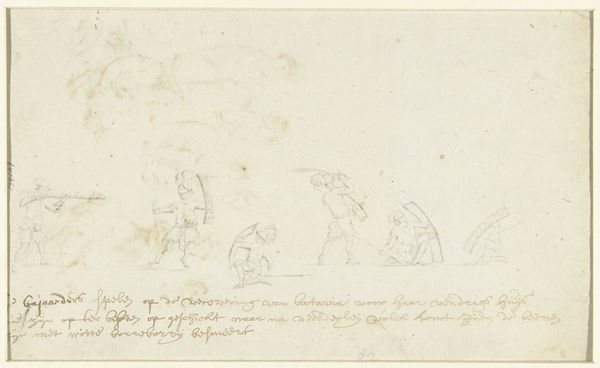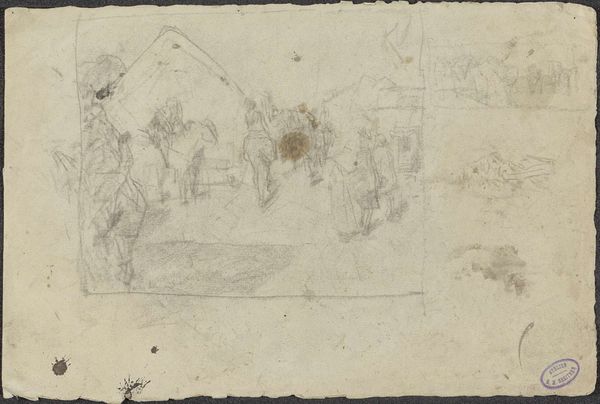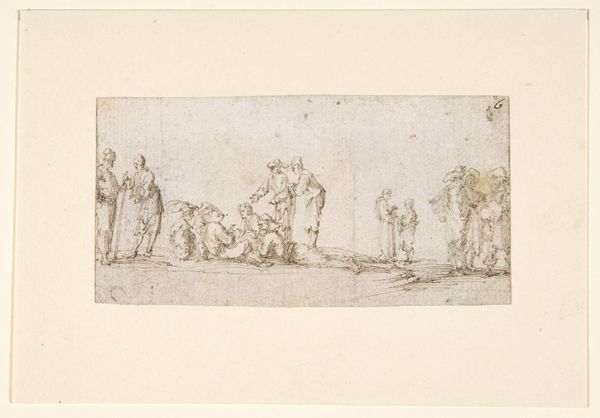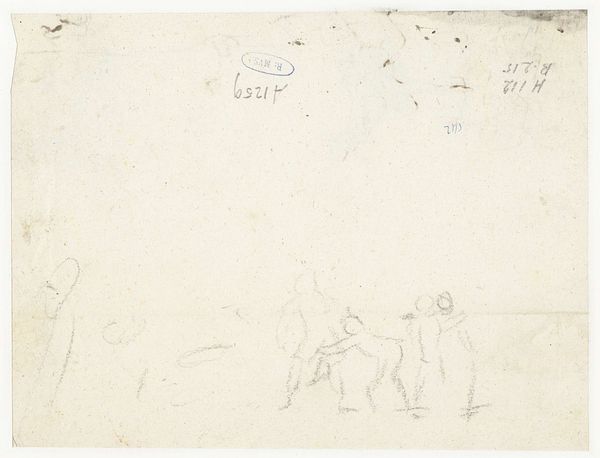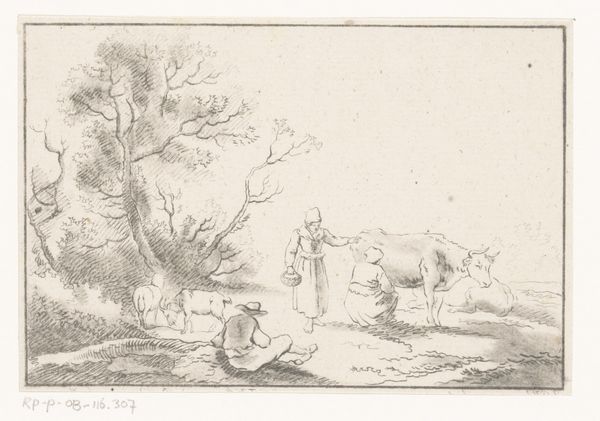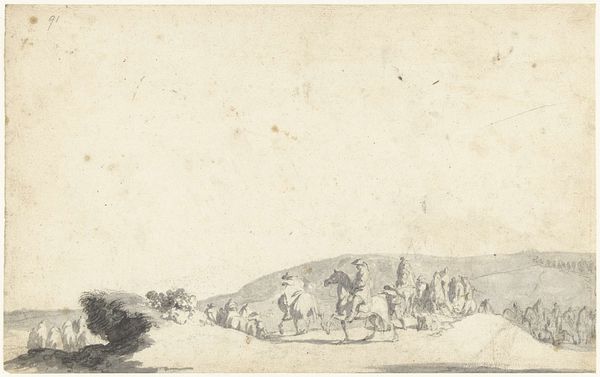
drawing, ink
#
drawing
#
dutch-golden-age
#
figuration
#
ink
#
line
#
genre-painting
#
realism
Dimensions: height 162 mm, width 212 mm
Copyright: Rijks Museum: Open Domain
Curator: Here we have Moses ter Borch's "Jongens die met hoeden een spelletje spelen," dating from around 1656, currently held in the Rijksmuseum. It's a pen and ink drawing that captures a moment of youthful activity. Editor: My first impression is the sparseness of the scene. The empty space really isolates the action, focusing my attention on the material elements: the hats, the ink, and the quality of the paper itself. There's a kind of stark simplicity. Curator: Exactly. Ter Borch, working within the Dutch Golden Age, often depicted scenes of everyday life. This drawing, a genre painting, offers insight into the social customs and entertainment of the time, reflecting the values of a society experiencing increasing prosperity and leisure. Editor: And I think that 'everyday life' aspect is key. You can see the labour, or lack thereof, reflected in the quality of materials and the sketch-like style. It’s a moment caught quickly. These aren’t highly finished oils for the elite; it's a drawing, suggesting a more accessible, immediate form of artmaking. It's literally just ink on paper. Curator: Precisely. It suggests an immediacy of observation, possibly made as a preliminary study for a larger work. Notice the way he renders the figures – particularly their clothing and hats – giving insight into the fashion of the mid-17th century and subtly reinforcing the status and belonging of those depicted. Editor: It makes me wonder, how was ink manufactured then? Who was involved in making these artistic materials? What kind of labour was invisibly built into the creation of even what appears to be a simple sketch? The seemingly nonchalant depictions hide a complex supply chain of labour. Curator: Absolutely, those questions are important, and the play with hats is intriguing too. They may have symbolized aspirations to a different social standing or engagement with the wider cultural world, like the emergence of new forms of theatrical entertainments. Editor: Ter Borch, then, isn't just showing us boys playing; he is indirectly showing us the mechanisms of labour, trade, and social aspirations at play during the Golden age in Dutch society. Curator: That's a thought-provoking way to look at it, focusing on those mechanisms beneath the image's surface. Editor: Considering all the labour, materials, social contexts, and processes, I find the true subject here isn't just some "boys playing," but also a historical snapshot materialized via modest ink on paper. Curator: It's certainly richer than I originally thought.
Comments
No comments
Be the first to comment and join the conversation on the ultimate creative platform.
